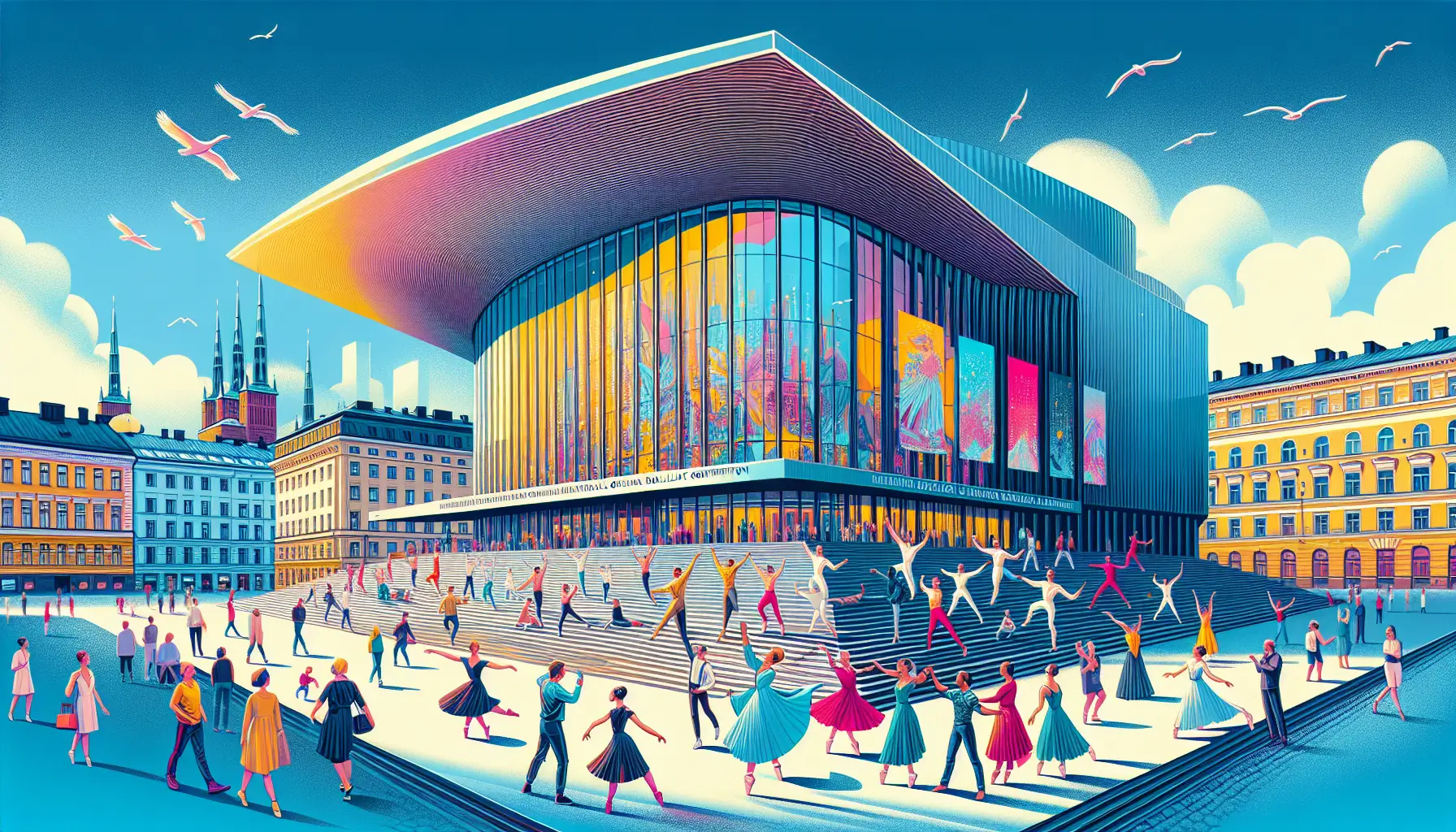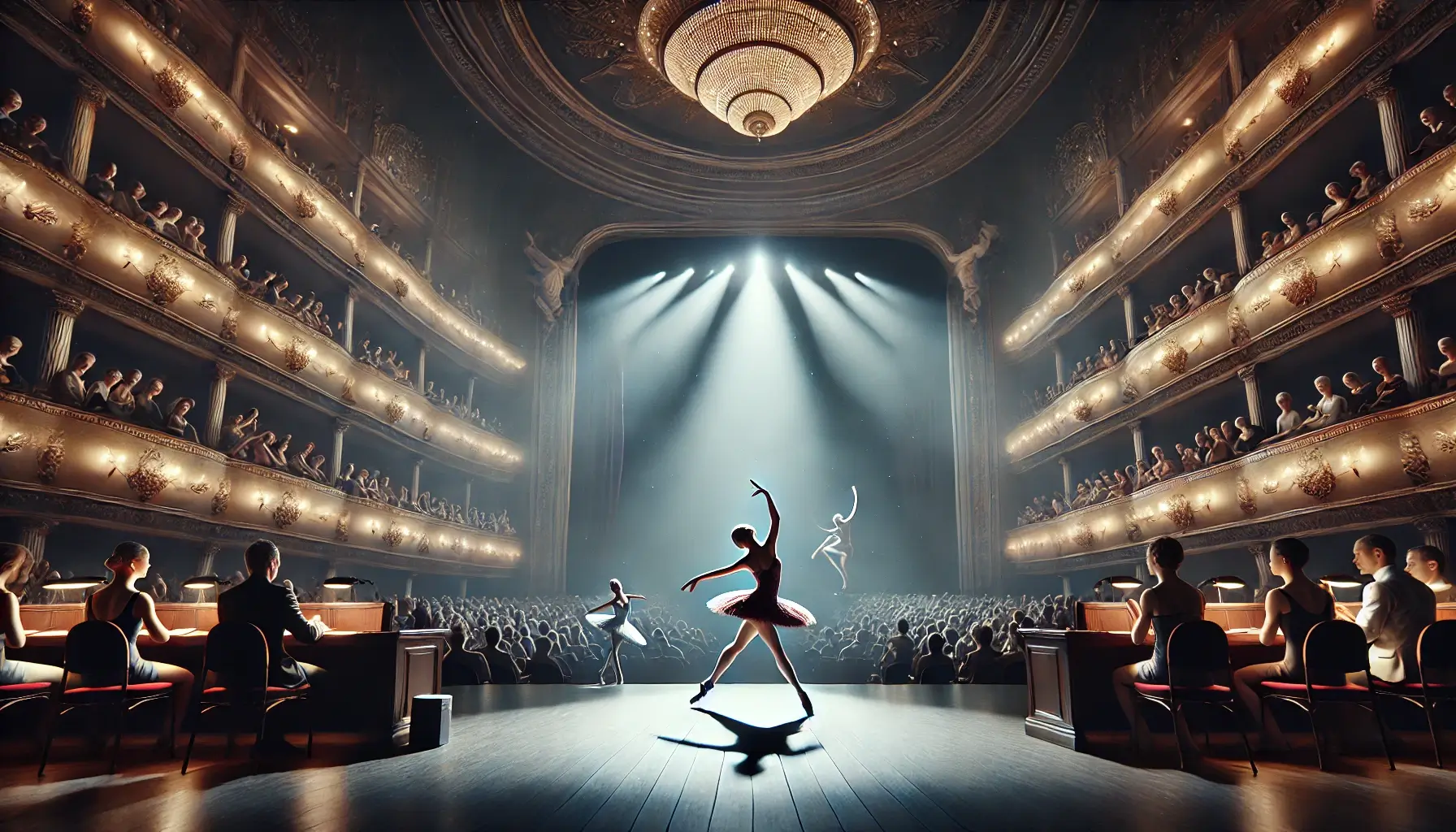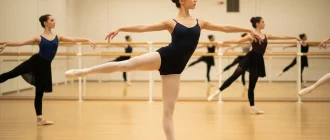The Helsinki International Ballet Competition (HIBC), also known as the Helsinki IBC, is a prestigious event that showcases emerging talent in ballet. Founded in 1984, it has become a major milestone for young dancers, providing a platform for classical and modern performances. This article covers the history, structure, and highlights of the HIBC, as well as notable winners and future opportunities for participants.
Key Takeaways
- The Helsinki International Ballet Competition, founded in 1984 by Doris Laine, has become a critical platform for nurturing young ballet talent, emphasizing both classical and modern repertoire.
- The competition comprises multiple rounds that progressively assess dancers’ abilities, culminating in a Final Gala where winners are announced and celebrated.
- The competition offers a one-week professional journey, allowing young dancers to showcase their artistic and technical skills through various performances and a gala, making it a comprehensive professional experience.
- Participants benefit from professional development opportunities, networking, and mentorship, with many past winners achieving significant success in prestigious ballet companies globally.
| Year | Moment Description | Significance | Featured Dancer(s) or Jury |
|---|---|---|---|
| 1984 | Inaugural Competition | The first Helsinki International Ballet Competition was held, establishing it as a prominent event in the world of ballet. | N/A |
| 1991 | Etoile Danseur Prize | The competition was awarded the prestigious Etoile Danseur Prize for the first time, recognizing outstanding talent in male dancers. | Vladimir Malakhov (Ukraine) |
| 1995 | Rise of Tero Saarinen | Finnish dancer Tero Saarinen, later known for his contemporary dance innovations, won the prize, marking his transition from classical to modern dance. | Tero Saarinen (Finland) |
| 2001 | Debut of the Junior Category | Introducing a Junior Category for dancers aged 15-19 will allow younger talents to compete and gain exposure on an international stage. | Various young dancers |
| 2005 | Breakthrough of Young Asian Talent | It was a significant year in which many Asian dancers, particularly from Japan and South Korea, excelled, reflecting the global spread of ballet excellence. | Miharu Maki (Japan), Junyoung Kang (South Korea) |
| 2012 | Guest Performances by Stars | The competition featured performances by world-renowned ballet stars, adding prestige and excitement to the event. | Natalia Osipova, Ivan Vasiliev |
| 2016 | Unprecedented Success for Female Dancers | It was a historic year where female competitors dominated, with several top awards going to women, signaling a shift in the competition’s dynamics. | Maria Vinogradova (Russia), Misa Kuranaga (Japan) |
| 2020 | Virtual Edition Due to Pandemic | The competition adapted to the global pandemic by holding a virtual event, showcasing resilience and innovation in the face of challenges. | Various international participants |
| 2022 | Record Number of Participants | The competition saw a record number of participants, highlighting its growing international appeal and importance. | Participants from over 40 countries |
| 2024 | Special Anniversary Edition | Celebrating its 40th anniversary, the competition featured special retrospectives, guest performances, and tributes to past winners. | Special performances by past laureates |
This table provides a concise overview of key moments that have shaped the Helsinki International Ballet Competition, reflecting its evolution, impact, and ongoing significance in the ballet world.
Overview of the Helsinki International Ballet Competition (HIBC)

The Helsinki International Ballet Competition, also known as Helsinki IBC, is renowned for promoting dancers and choreographers, showcasing young talent in the international ballet world. It has evolved significantly since its founding in 1984 by Doris Laine. Over the years, it has become a pivotal event in the international ballet competition scene, recognized for its emphasis on classical and modern repertoire.
From its modest beginnings, with 62 competitors from 17 countries, HIBC has become one of the most highly regarded international ballet competitions. The competition is known not only for its high standards but also for nurturing and spotlighting up-and-coming dancers, making it a cornerstone in the careers of many ballet professionals.
The competition is currently overseen by a board led by Jorma Uotinen, a prominent figure in Finnish ballet, who has played a critical role in its development. The artistic direction of the competition has increasingly focused on choreography, ensuring that it remains a relevant and exciting platform for showcasing creative, artistic, and technical excellence.
Origins and Founding by Doris Laine
The Helsinki International Ballet Competition was founded by Doris Laine, a visionary who saw the potential for a world-class international ballet competition in Finland. The inaugural event occurred at the Helsinki City Theatre shortly after Midsummer in 1984, featuring 62 competitors from 17 countries.
Doris Laine’s efforts laid the foundation for one of the leading international ballet competitions, fostering a platform where young dancers could shine.
Current Status and Artistic Direction
Under the guidance of its new artistic director, Jorma Uotinen, the Helsinki International Ballet Competition continues to thrive with its new creative and artistic direction. His leadership has brought a renewed focus on choreography and the development of new creative directors, further cementing the competition’s reputation for innovative and technical excellence.
The competition offers a one-week professional journey, allowing young dancers to showcase their skills through various performances and a gala.
The involvement of directors from the Finnish National Ballet has been instrumental in maintaining the competition’s high standards and innovative spirit.
Structure and Format of HIBC

The structure of the Helsinki International Ballet Competition is meticulously designed to test and showcase a dancer’s full range of abilities. The competition features multiple rounds, each with its challenges and opportunities for dancers to showcase their skills. These rounds culminate in a final performance, where the top competitors vie for the coveted awards.
This well-organized ballet competition includes three main rounds and a grand Gala event. The competition rounds are designed to progressively assess different aspects of ballet performance, from classical techniques to contemporary choreography.
The final Gala is the competition’s climax, where the winners are announced and celebrated in a grand awards ceremony.
The competition is framed as a one-week professional journey, providing young dancers with a comprehensive experience that includes various performances and a gala, allowing them to showcase their artistic and technical skills.
Performance Rounds
Participants in the Helsinki International Ballet Competition undergo several performance rounds, each meticulously crafted to evaluate different facets of their ballet skills. During the First Round, competitors perform two variations from the classical ballet repertoire, showcasing their technique and adherence to classical forms.
In the Second Round, participants present a contemporary piece of choreography created after 2006, demonstrating their versatility and ability to interpret modern choreography.
Soloists perform two classical variations in the Final Round, and couples dance a pas de deux. This crucial stage allows judges to compare each dancer’s technical proficiency and artistic interpretation across multiple performances.
The Final Gala

The Final Gala is a grand celebration of the talented dancers who have competed in the HIBC. Winners are announced during the awards ceremony, and all finalists take the stage, showcasing the best of their skills and artistry.
This event is a highlight for both participants and the audience, as it encapsulates the spirit of the competition and celebrates the dancers’ achievements.
Categories and Awards
The Helsinki International Ballet Competition features a variety of categories and awards designed to recognize and reward the diverse talents of its participants. The competition includes classical and modern works, allowing dancers to showcase their versatility.
The prestigious Jane Erkko Grand Prix, awarded to the overall outstanding performer, comes with a monetary prize of €20,000, highlighting the high stakes and significant recognition associated with the competition.
Other notable awards include the Doris Laine Prize, valued at €12,000, which recognizes exceptional talent, as well as several awards for choreography, each worth €5,000. These awards provide financial support and testify to the dancers’ hard work and dedication.
Senior and Junior Divisions
The competition features two primary age categories: the junior division for dancers aged 15-19 and the senior division for those aged 20-25. This structure ensures young dancers compete against their peers, maintaining fairness and a challenging environment.
Prizes for the senior division include €10,000 for the first prize, €7,000 for the second, and €5,000 for the third, while the juniors compete for €5,000, €3,500, and €2,000 for the top three spots, respectively.
Special Awards and Recognitions
In addition to the main prizes, the HIBC also offers special awards for exceptional artistry, creativity, and innovation. These recognitions play a crucial role in motivating competitors and acknowledging their unique contributions to the art of ballet.
Participants may also receive accolades for their dedication and contributions to the ballet community.
The Helsinki International Ballet Competition (HIBC) is a prestigious event every four years in Helsinki, Finland. It attracts talented young dancers from around the world who compete in various categories. The competition is highly regarded in the ballet community for its rigorous standards and the opportunities it provides for emerging dancers. Below is a featured table summarizing the key categories and awards at the Helsinki International Ballet Competition:
Categories and Awards of the Helsinki International Ballet Competition
| Category | Description | Age Group | Awards |
|---|---|---|---|
| Junior Soloist | Solo performances by young dancers showcase classical and contemporary ballet pieces. | 15-19 years | – Gold, Silver, Bronze Medals – Diplomas |
| Senior Soloist | Solo performances by more mature dancers demonstrating advanced techniques and artistry in classical and contemporary ballet. | 19-25 years | – Gold, Silver, Bronze Medals – Diplomas |
| Junior Duet | Pairs of young dancers perform classical ballet duets, focusing on coordination and harmony between partners. | 15-19 years | – Gold, Silver, Bronze Medals – Diplomas |
| Senior Duet | Pairs of more experienced dancers perform duets that require a higher level of technical skill and artistic expression. | 19-25 years | – Gold, Silver, Bronze Medals – Diplomas |
| Choreographic Prize | Awarded for the best original choreography performed during the competition, highlighting creativity and innovation in ballet. | All ages (specific to choreographers) | – Choreography Prize – Recognition Diploma |
| Best Finnish Dancer | A special award is given to the most outstanding Finnish participant in the competition, regardless of their category. | Any age group | – Special Prize – Recognition Diploma |
| Best Contemporary Performance | Recognizes the best interpretation of a contemporary ballet piece, showcasing versatility and modern technique. | Any age group | – Special Prize – Recognition Diploma |
| Audience Award | Voted by the audience, this award recognizes the most popular performance among spectators, celebrating audience engagement. | Any age group | – Audience Award Trophy – Recognition Diploma |
| Grand Prix | The highest honor of the competition is awarded to the most exceptional dancer or duet across all categories, demonstrating outstanding artistry and technique. | Senior (19-25 years) | – Grand Prix Trophy – Monetary Prize |
Additional Notes:
- Eligibility: Participants must usually qualify through preliminary rounds or selection by national ballet organizations.
- Competition Structure: Each category typically involves multiple rounds, including classical and contemporary performances.
- Judging Panel: Comprises internationally recognized ballet professionals and choreographers, ensuring high standards and fairness.
This table provides a clear overview of the main competitive categories and the awards at the Helsinki International Ballet Competition, reflecting the competition’s emphasis on classical ballet traditions and contemporary innovations.
Notable Past Winners
Over the years, the Helsinki International Ballet Competition has seen many talented dancers rise to prominence. Notable past winners include Yuka Masumoto from Japan, who won the Grand Prix at the 2022 competition, and Giulio Diligente from Italy, who received the Doris Laine Prize. These awards highlight the exceptional talent and dedication of the competitors.
Winning the HIBC can be a transformative experience, as evidenced by the career trajectories of past winners. Many have gone on to join prestigious ballet companies and achieve significant milestones in their careers.
The recognition and visibility gained from participating in HIBC have opened doors to numerous opportunities for these dancers.
Success Stories
Success stories abound among HIBC alums:
- Maya Schonbrun, a first-prize winner in the Junior Women’s category, has made significant strides in her ballet career since winning.
- Clark Eselgroth, who won first prize in the Junior Men category, continues to build on his success.
- Katherine Higgins, who achieved third place in the junior ladies division, is now training at the prestigious Royal Ballet School of Antwerp.
These examples highlight the profound impact HIBC can have on a dancer’s career.
The Role of the Finnish National Opera and Ballet

The Finnish National Opera and Ballet has been a cornerstone of the Helsinki International Ballet Competition since the mid-1990s. Their collaboration has significantly enhanced the competition’s reputation and structure, providing a world-class venue and organizational support.
The artistic director of the Finnish National Opera and Ballet ensures that the competition maintains its high standards and continues to attract top talent from around the world.
The competition is hosted at the Finnish National Opera and Ballet, which offers a prestigious and inspiring setting for the event. The collaborative efforts between the ballet competition and the Finnish National Opera and Ballet highlight the importance of support and partnerships in the arts. This ensures that HIBC remains a beacon of excellence in the international ballet competition community.
Support and Sponsorship
The success of HIBC would not be possible without the support and sponsorship from various cultural organizations and the City of Helsinki. Doris Laine’s vision for the competition was brought to life through this strong backing, which continues to be a vital part of the competition’s operation.
The Finnish National Ballet is significant in providing resources and support, ensuring a high-quality experience for all participants.
Jury and Judging Criteria
The Helsinki International Ballet Competition jury comprises esteemed figures from the world of ballet, including renowned dancers, choreographers, and directors. This high-class jury ensures that the competition maintains its rigorous standards and that the evaluations are fair and comprehensive. The presence of such distinguished judges adds to the prestige of the international ballet competition and provides valuable feedback to the participants.
The judging criteria at HIBC assess a dancer’s full range of abilities, including technical skill, artistry, and performance interpretation. This comprehensive approach ensures that only the most talented dancers are recognized.
High-Class Jury Members
The jury for HIBC includes prominent figures such as Madeleine Onne, the Artistic Director of the Finnish National Ballet, and Nina Ananiashvili, a prima ballerina and the Artistic Director of the State Ballet of Georgia. These high-class jury members bring a wealth of experience and expertise to the competition, ensuring that the evaluations are fair and insightful.
Criteria for Judging
The judging criteria at HIBC encompass a range of factors, including artistic and technical excellence, proficiency, artistic expression, and overall performance quality. Esteemed jury members from international ballet companies and renowned educational institutions assess the dancers’ performances, ensuring a high evaluation standard.
This rigorous evaluation process helps identify the most talented and promising dancers.
Training and Workshops
The Helsinki International Ballet Competition offers more than just a platform for competition; it provides a structured environment for dancers to enhance their artistic and technical skills. The rigorous training sessions and workshops are designed to push the participants to their limits, helping them grow as dancers and artists.
This focus on artistic and technical excellence, as well as professional development, is one of the key aspects that sets HIBC apart. Additionally, the competition features a one-week professional journey, offering young dancers the opportunity to showcase their skills through various performances and a gala.
Participation in HIBC can significantly boost a dancer’s skills and creativity, contributing to various career opportunities. With logistical arrangements like accommodations near the venue allowing for extensive rehearsal time, participants are well-prepared and confident, ready to showcase their best on stage.
Professional Development Opportunities
The Helsinki International Ballet Competition offers numerous professional development opportunities, including scholarships and further training for outstanding performances. These opportunities can lead to partnerships and collaborations with fellow dancers and choreographers, further enhancing the participants’ careers.
The competition provides a supportive environment where young dancers can thrive and develop their skills.
Workshops Led by Experts
Respected figures in the international ballet community lead workshops at HIBC, offering participants invaluable insights and advanced techniques. These sessions prepare dancers for competitive challenges and help them develop their artistry.
The unique learning experiences provided by these workshops are essential for developing aspiring dancers and awakening future possibilities for new artistic directors.
Future Possibilities for Participants

The Helsinki International Ballet Competition is a milestone and a launchpad for future possibilities. Many winners have gone on to significant careers in prestigious ballet companies worldwide, thanks to the exposure and recognition they gained at HIBC. The competition serves as a transformative experience, igniting passions and shaping the artistic identities of its participants.
Beyond immediate accolades, the competition fosters personal growth and self-awareness among dancers. These experiences, invaluable friendships, and connections formed during the event provide a solid foundation for future success and often lead to collaborations with renowned choreographers and performances on international stages.
Career Pathways
The participants in the Helsinki International Ballet Competition often find themselves on enhanced career pathways, accessing professional opportunities in the international ballet industry. The experience of competing at HIBC, including handling pressure and showcasing talent, boosts their confidence and employability.
Winning the competition can lead to leading roles in major ballet productions and positions in prestigious ballet companies.
Networking Opportunities
HIBC offers valuable networking opportunities, enabling participants to connect with industry professionals and fellow dancers. These connections can significantly enhance a dancer’s career trajectory, providing access to workshops, masterclasses, and mentorship programs.
The greater importance of these relationships often extends beyond the competition, leading to increased importance for further professional development and career advancement.
Testimonials from Participants
Testimonials from past participants highlight the profound impact the Helsinki International Ballet Competition has had on their careers and personal development. Many dancers emphasize the support and mentorship they receive from ballet masters and choreographers during their preparation. This mentorship enhanced their performance and boosted their confidence, leading to the event.
The experiences and support received during HIBC have significantly influenced the career pathways and future opportunities of many dancers. Numerous notable winners have succeeded in ballet, securing prominent positions in prestigious companies.
Personal Journeys
Past participants often recall memorable highlights from the final gala performance, tied to the anticipation of prize announcements. These cherished moments mark the culmination of their journey at HIBC.
Participants’ personal stories of growth and achievement add a human touch to the competition’s grand narrative.
Impact on Careers
The impact of HIBC on dancers’ careers cannot be overstated. The competition provides valuable networking opportunities, allowing dancers to connect with industry professionals and pave their paths in ballet. Many participants have found that the experience gained at HIBC has significantly enhanced their career prospects and opened new doors in the ballet world.
Summary
The Helsinki International Ballet Competition is a prestigious and transformative event in the world of ballet. From its origins under Doris Laine to its current status under Jorma Uotinen, HIBC has consistently fostered artistic and technical excellence. The competition’s rigorous structure, high-class jury, and supportive environment provide participants with invaluable experiences and opportunities. For many dancers, HIBC is not just a competition but a stepping stone to future success and personal growth.
Frequently Asked Questions
What is the Helsinki International Ballet Competition?
The Helsinki International Ballet Competition (HIBC) is a renowned event highlighting global young ballet talent. It was established in 1984 by artistic director Doris Laine. It is a significant platform for emerging dancers to demonstrate their skills and potential.
What are the different divisions in HIBC?
HIBC comprises junior and senior divisions, with juniors aged 15-19 and seniors aged 20-25.
Who are some notable past winners of HIBC?
Notable past winners of HIBC include Yuka Masumoto and Giulio Diligente, who have made significant achievements in their professional journeys.
What kind of support does the Finnish National Opera and Ballet provide to HIBC?
The Finnish National Opera and Ballet supports HIBC through collaboration, resource sharing, and event hosting.
What opportunities does HIBC offer to its participants?
HIBC provides participants with valuable opportunities for professional development, networking, and access to career pathways in distinguished ballet companies globally. This makes it an excellent platform for aspiring ballet professionals.







